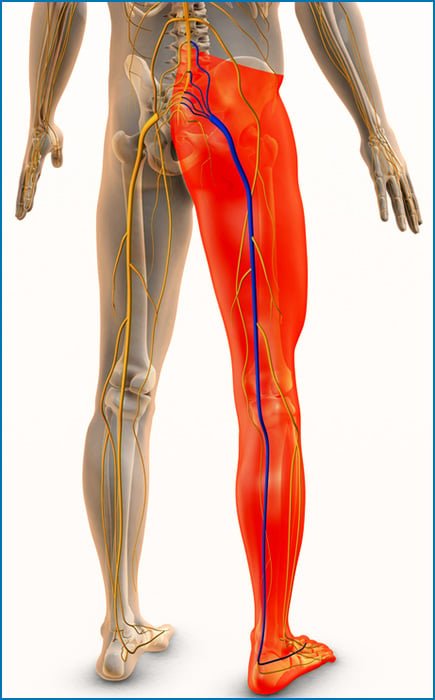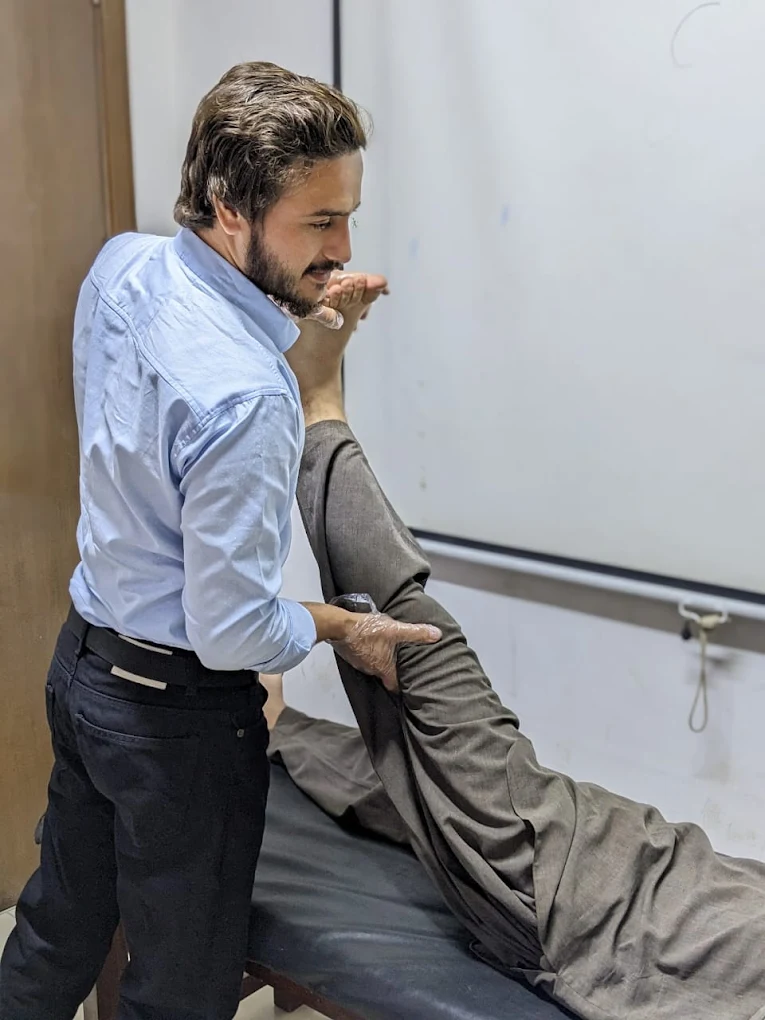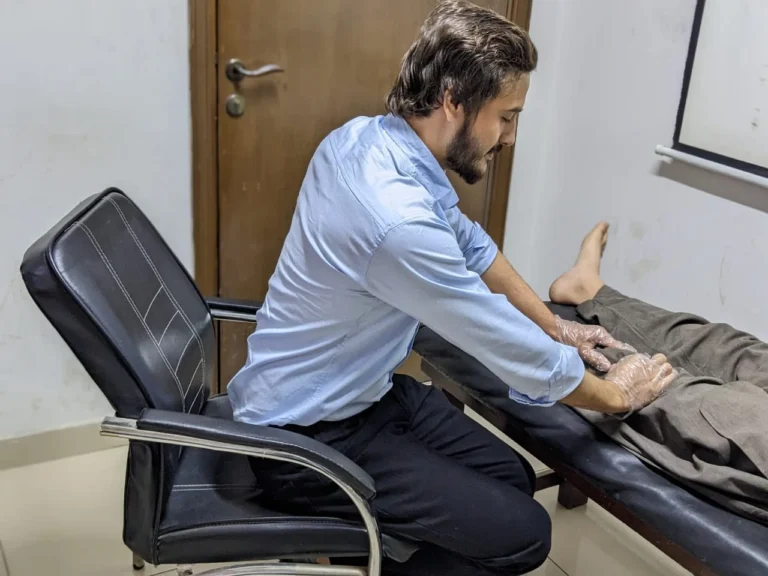A Comprehensive Guide to Pain Relief and Recovery :

Sciatica is a common yet debilitating condition characterized by sharp, shooting pain that radiates from the lower back down the leg. This pain occurs due to compression or irritation of the sciatic nerve, the longest nerve in the body. While sciatica can be intensely painful, physiotherapy offers a proven, non-invasive solution to alleviate symptoms, restore mobility, and prevent recurrence.
In this blog, we’ll explore:
- What sciatica is and its common causes
- How physiotherapy can help relieve sciatic pain
- Key physiotherapy techniques and exercises for sciatica
- The expected timeline for recovery
- Lifestyle changes to support long-term relief
Understanding Sciatica :
What Is Sciatica?**
Sciatica refers to pain that travels along the path of the sciatic nerve, which runs from the lower back through the hips, buttocks, and down each leg. It typically affects one side of the body and can range from mild discomfort to severe, disabling pain.
Common Causes of Sciatica
The most frequent causes include:
- Herniated or bulging discs (the most common cause, where spinal discs press on the nerve)
- Spinal stenosis (narrowing of the spinal canal)
- Piriformis syndrome (tightening of the piriformis muscle in the buttocks, irritating the nerve)
- Poor posture, prolonged sitting, or weak core muscles
- Injury or trauma to the spine
Symptoms of Sciatica
- Sharp, burning, or electric-like pain in the lower back, buttock, or leg
- Numbness, tingling, or weakness in the affected leg
- Pain that worsens with sitting, coughing, or sneezing
How Physiotherapy Helps with Sciatica
Physiotherapy is a cornerstone of sciatica treatment, addressing the root cause rather than just masking symptoms. Here’s how it helps:
1. Pain Relief Through Manual Therapy
- Hands-on techniques like spinal mobilization, massage, and dry needling reduce muscle tension and improve nerve function .
- Heat/cold therapy can ease inflammation and relax tight muscles .
2. Targeted Stretching & Strengthening Exercises
A physiotherapist will design a personalized exercise plan to:
- Relieve nerve compression (e.g., nerve gliding/flossing exercises) .
- Strengthen core and glute muscles to support the spine (e.g., bridges, planks, bird-dog exercises) .
- Improve flexibility in the hamstrings, piriformis, and lower back (e.g., knee-to-chest stretch, child’s pose) .
3. Posture Correction & Ergonomics
- Poor sitting or standing posture can worsen sciatica. Physiotherapists teach proper ergonomics for workstations, lifting techniques, and sleeping positions .
4. Preventing Recurrence
- Strengthening weak muscles and improving body mechanics reduce the risk of future flare-ups .
Top Physiotherapy Exercises for Sciatica Relief
Here are some of the most effective exercises recommended by physiotherapists:
1. Piriformis Stretch
- How to do it: Lie on your back, cross one ankle over the opposite knee, and gently pull the knee toward your chest. Hold for 20-30 seconds .
- Why it helps: Relieves tension in the piriformis muscle, which can compress the sciatic nerve.
2. Sciatic Nerve Glide (Flossing)
- How to do it: Sit on a chair, extend one leg straight, flex the foot, and gently bend the head forward. Repeat 10 times per leg .
- Why it helps: Encourages smooth nerve movement, reducing irritation.
3. Cat-Cow Stretch
- How to do it: On hands and knees, alternate between arching (cow) and rounding (cat) the back. Repeat 10-15 times .
- Why it helps: Improves spinal flexibility and reduces nerve pressure.
4. Glute Bridges
- How to do it: Lie on your back, lift your hips while squeezing your glutes, hold for 5 seconds, then lower. Repeat 10-15 times .
- Why it helps: Strengthens the glutes and lower back, supporting spinal alignment.
5. Child’s Pose
- How to do it: Kneel, sit back on your heels, and stretch your arms forward. Hold for 20-30 seconds .
- Why it helps: Relieves lower back tension and gently stretches the spine.
(Note: Always consult a physiotherapist before starting new exercises to ensure they’re safe for your condition.)
How Long Does Physiotherapy Take for Sciatica?
Recovery time varies depending on severity, but most patients see improvement within 4-6 weeks with consistent therapy .
- Mild cases: 6-8 sessions over a few weeks .
- Chronic or severe cases: Up to 12 weeks or longer .
- Home exercises are crucial for speeding up recovery .
Lifestyle Tips to Support Sciatica Recovery
- Stay active (avoid prolonged sitting; take short walks) .
- Maintain a healthy weight to reduce spinal pressure .
- Use ergonomic supports (lumbar cushions, standing desks) .
- Avoid high-impact activities (running, heavy lifting) until symptoms improve .
When to Seek Professional Help
If you experience:
- Severe pain that doesn’t improve with rest
- Numbness or weakness in the leg
- Loss of bladder/bowel control (seek emergency care)




